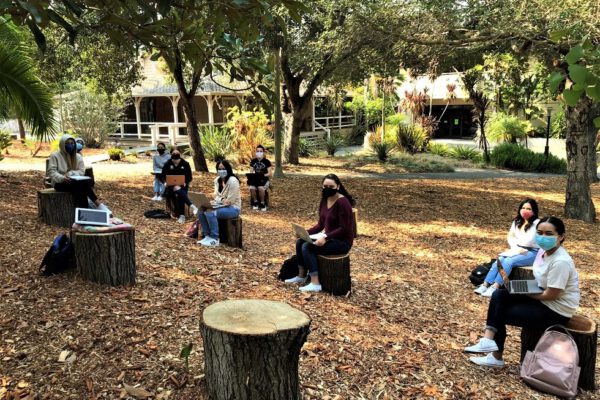Insights From Community College Leaders on Recruiting, Enrolling, and Supporting Students During COVID-19 and Beyond
Title: Community College Leadership Report: Maintaining a Focus on Reaching, Enrolling, Supporting, and Retaining Students
Source: Salesforce.org and The Chronicle of Higher Education
A new report offers insights about community and technical colleges’ priorities and opportunities during and after the continued COVID-19 pandemic, focusing particularly on the recruitment, enrollment, and completion of students at these institutions. Data was collected for the report through surveying 703 staff members who serve in management, leadership, or faculty positions at wo-year institutions.
Among the findings:
Reaching, enrolling, and retaining students are top priorities: Among respondents, 87 percent marked increasing enrollment rates, 78 percent marked increasing retention rates, and 59 percent marked increasing number of graduates, each as a top priority. Further, when asked about what metrics were best for measuring their students’ success, 86 percent noted completion rates, 72 percent retention rates, and 42 percent enrollment rates. The pandemic shed light on how staff can focus on boosting enrollment and engaging students at community colleges.
Supporting students holistically is critical: Seven in ten respondents noted that they see connections between student services and student success, especially when community colleges serve larger percentages of students who are homeless, impoverished, and/or unemployed, in comparison to four-year institutions. High percentages of staff members see students needing more of these services, including mental health services (76 percent), academic support (75 percent), academic advising and counseling (75 percent), basic needs support (62 percent), and financial aid advising (60 percent). Yet, resources remain an issue, with only 38 percent of respondents saying that their institution prioritizes capturing and sharing holistic views of students and 48 percent indicating that they do not have adequate technology to support student well-being.
Evolving transfer and career pathways: Among staff respondents, 82 percent said their college prepares students to land jobs in their field beyond graduation, though only 45 percent of staff said that career advising will be a top priority after the pandemic. Among respondents, 83 percent said that their college is at least somewhat effective in offering academic support to transfer students, and 80 percent marked that their institution is effective at collaborating with four-year colleges and universities to facilitate transfer pathways for students. However, only a31 percent said that transfer rates were one of the most important student success measurement metrics for their institutions.
A focus on technology and innovation: Over half (56 percent) of staff said that a top priority for their institutions is using technology to outreach and engage with prospective students. Further, 41 percent said that they plan to make improvements in technology to support students more effectively. Yet, access to technology remains an issue. One in three respondents said that their institutions lack proper technology tracking systems, and 28 percent noted a lack of data within the systems they currently have. Even further, only 53 percent of the respondents said they have the technology to meet demands after the pandemic.
Hope for the future: Overall, more than half (53 percent) of respondents noted that they lack adequate staff and support, especially in creating new programs. However, the community college staff remain hopeful, with 69 percent indicating they have high levels of confidence about the future of their institutions. Further, 68 percent said that they are at least somewhat optimistic about prospective enrollment for their colleges.
Throughout the report, leaders and researchers who support and study community colleges offered advice to further the goals of these two-year institutions:
- Use technology and data to explore student success, including which students are falling behind in coursework or not completing enough classes to attain their degree.
- Prepare students for well-paying jobs, providing students with helpful career advising.
- Do not focus so much on recruitment and enrollment that institutions lose sight on improving operations for students already attending.
- Work with four-year institutions to improve transfer systems and pathways.
- Consider what worked during the pandemic, such as flexible and remote learning, and integrate those aspects into operations and the student experience post-pandemic.
- Focus on students holistically, thinking about how to serve each student’s needs.
To read the full report, click here. If you would like to learn more about priorities and top issues for community college and other institutional leaders, check out ACE’s Pulse Point survey reports.
—Ty McNamee
If you have any questions or comments about this blog post, please contact us.


